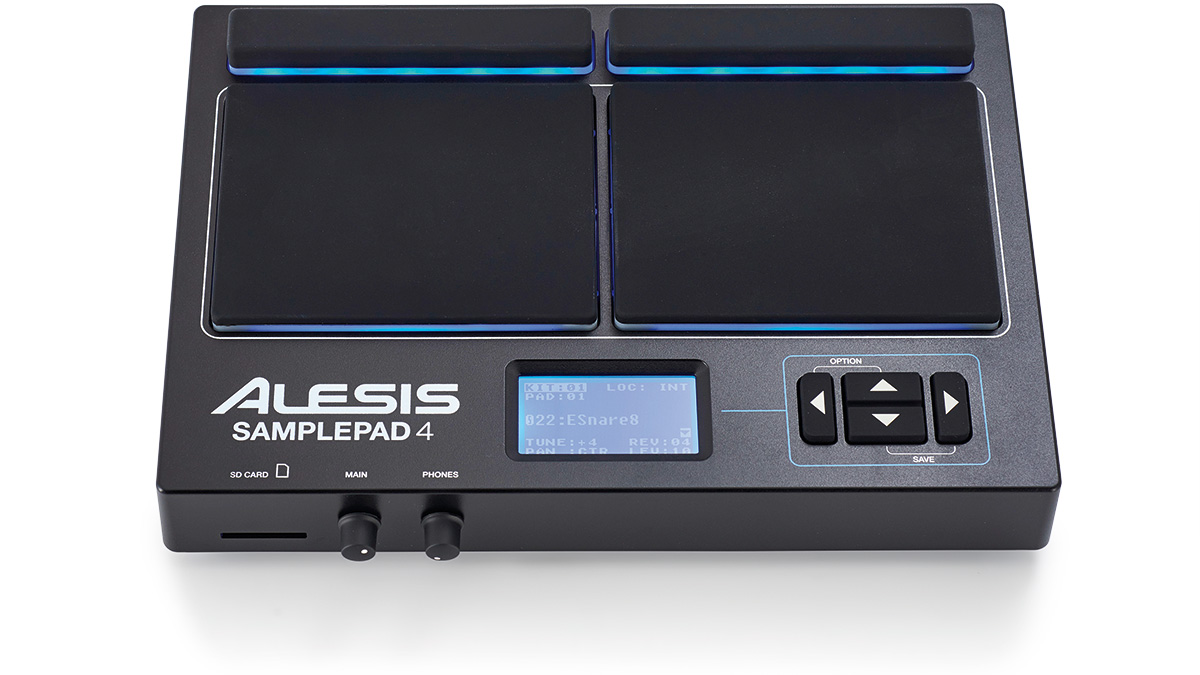MusicRadar Verdict
More facilities are on offer from this fantastic little pad than the scope of this review will allow, and at just over a hundred pounds, it has to be money well spent.
Pros
- +
Packed with features. Good value.
Cons
- -
Scroll arrows may be a tad minimalistic.
MusicRadar's got your back
Here we have the latest in a line of 'Multi-pads' from the e-boffins at Alesis.
Alesis already has the Performance Pad (pad-come-drum machine with on-board drum sounds), Percpad (on-board drum sounds), SamplePad and SamplePad Pro (also having on-board drum sounds but with the ability to play user samples).
- Get creative with the best electronic drum pads
Build
At a glance it appears there are many similarities with the Alesis SamplePad Pro, including the black finish ABS casing, graphics and minimalist controls. While the model has four playable pads, its bigger brother has eight. However, being so compact, (half the size of its stable-mate), it will slot into the tightest available space and it's around half the price too.
Around the pad perimeters are cool-looking LED strips which illuminate when powered up. The topmost pads are narrow 'bar type' triggers, positioned at the very back/edge of the box. The other two are much larger and occupy the lion's share of the allotted space.
To the front we find a single SD slot (for up to 32GB), volume controls for headphones and output. NB: a standard 32GB SD card will store over 80 user kits and a huge number of user samples - tons of room. Around the back is a range of outputs, push button power switch, socket for the power supply (external PSU), and a USB socket.
Any captured sample may be saved onto the SD card (via USB), without having to remove it. Facets of any user sample may be altered, copied and saved (without affecting the original), including tuning, pan and reverb.
Samples may be layered by assigning any two sounds to one of the four pads. The layers may have different trigger thresholds, for example there's potential for fat- sounding samples depending on velocity.
Hands On
Our first thoughts are how solid the pad feels - robust and reassuringly 'gigworthy'. Once powered up, with the fluorescent blue around the pads, it looks stunning and practical too - useful for a visual stick guide on any darkened, dimly-lit stage.
As the pad is struck, the perimeter LEDs become brighter, providing a useful indicator for both editing and live performance. Having scroll arrows as the only controls may seem a little too minimalistic.
However, as most of the intense inputting work will be at home pre-gig, when editing pad parameters, naming samples etc, it's not something you would have to do in a live situation.
In practice, one key press is all it takes to swap between the user kits and, we don't have to wait for samples to load upon each change.
While the on-board samples are superb and a clearly useful attribute, triggering your own captured ones is where the real fun is to be had. For example, changing pitch in order to craft some outlandishly thick snare drums and taking full advantage of dual layering is a great bonus.
One useful aspect is the pad control mode - striking any predefined pad (or external trigger), will act as a controller. For example, a pad may be used to start/stop the metronome or external sequencer, trigger a sample while halting the previous or, conversely, playing a sample and then sounding others over the previous.
By far the most fun can be the loop facility which (as it says on the tin), will sound any sample continuously.
“Excels at unique modulated timbres, atonal drones and microtonal sequences that reinvent themselves each time you dare to touch the synth”: Soma Laboratories Lyra-4 review
“I used everything I knew about music”: How Green Day exceeded expectations with their most ambitious song
YouTube just added AI tools that makes musicians, library music and video editors redundant










